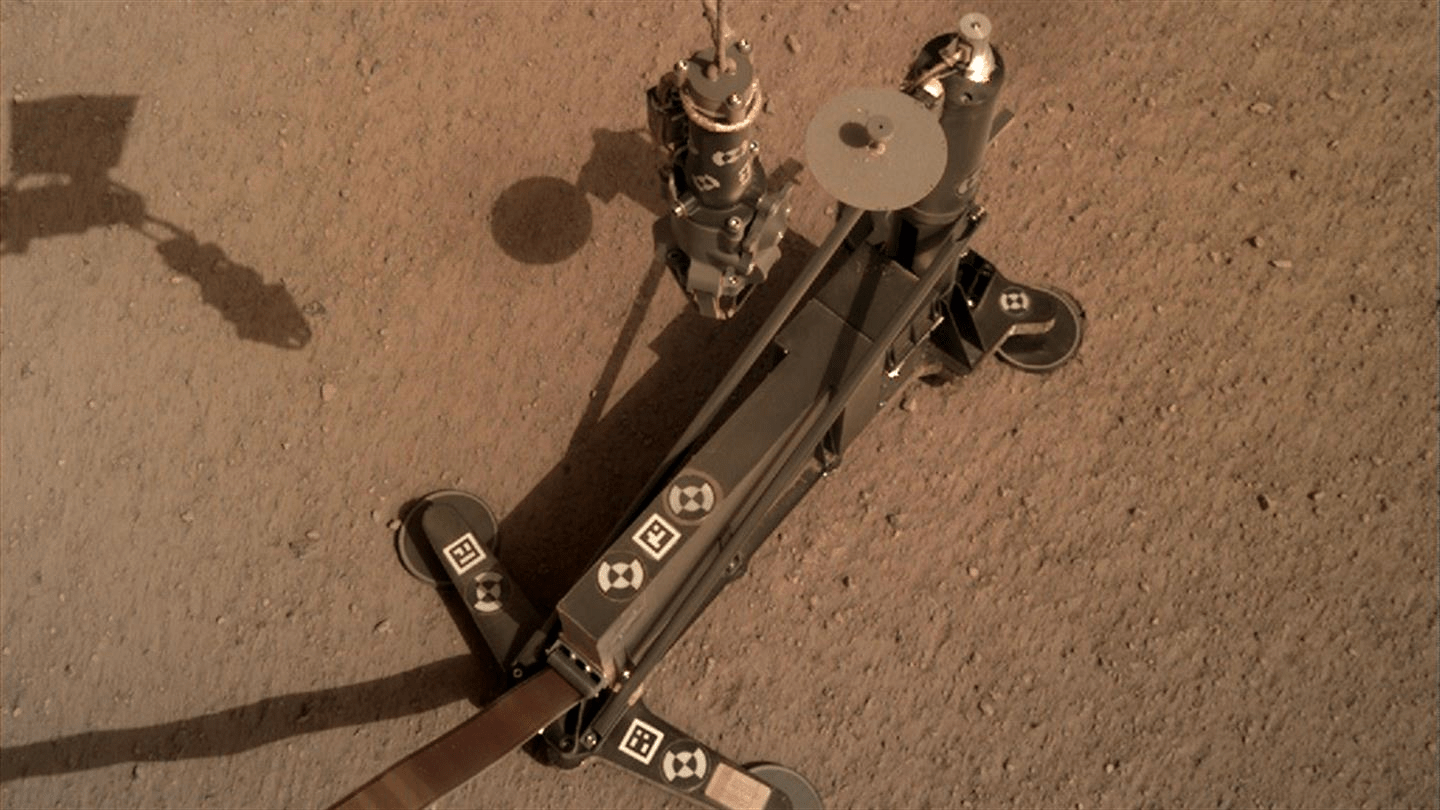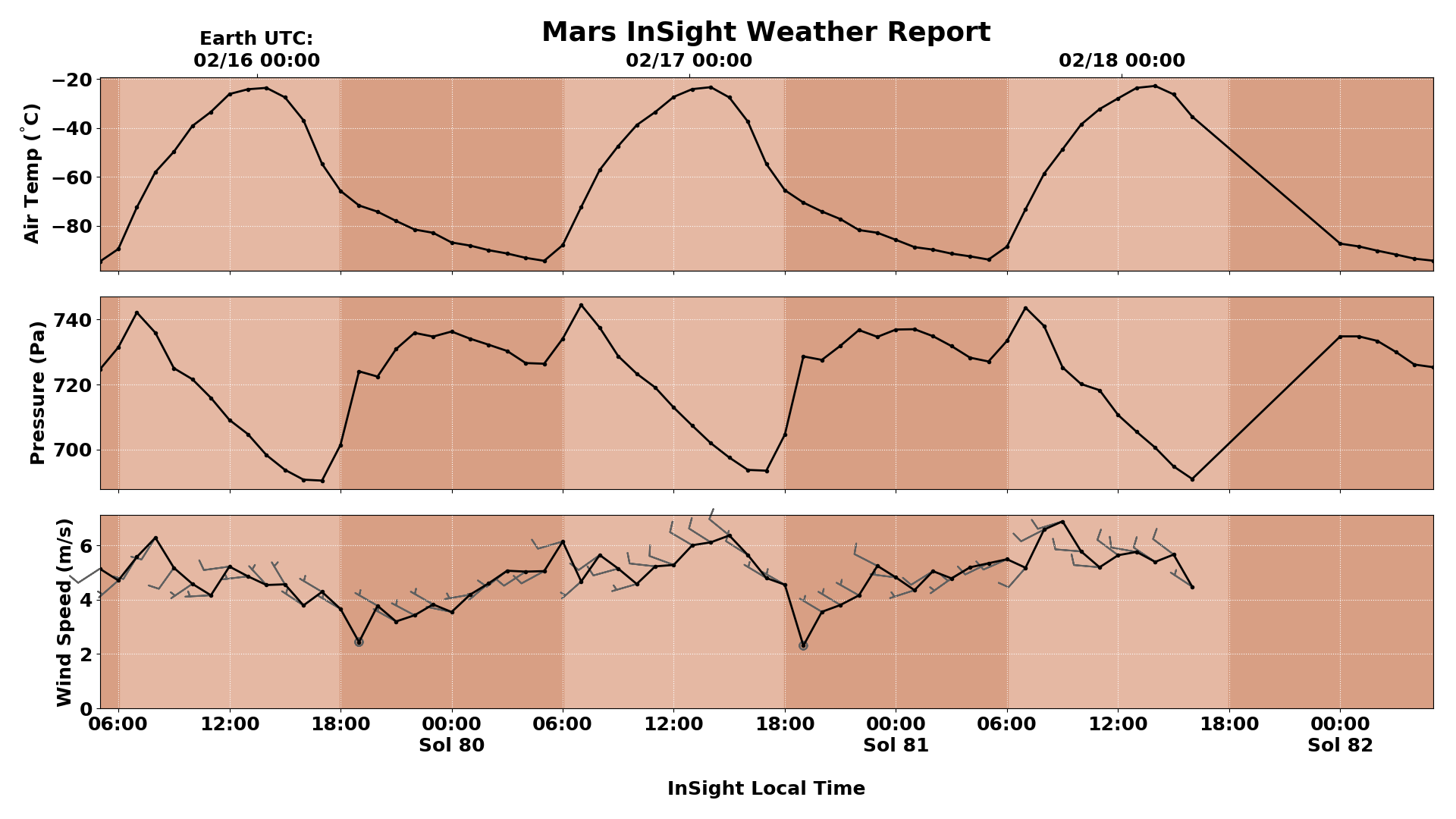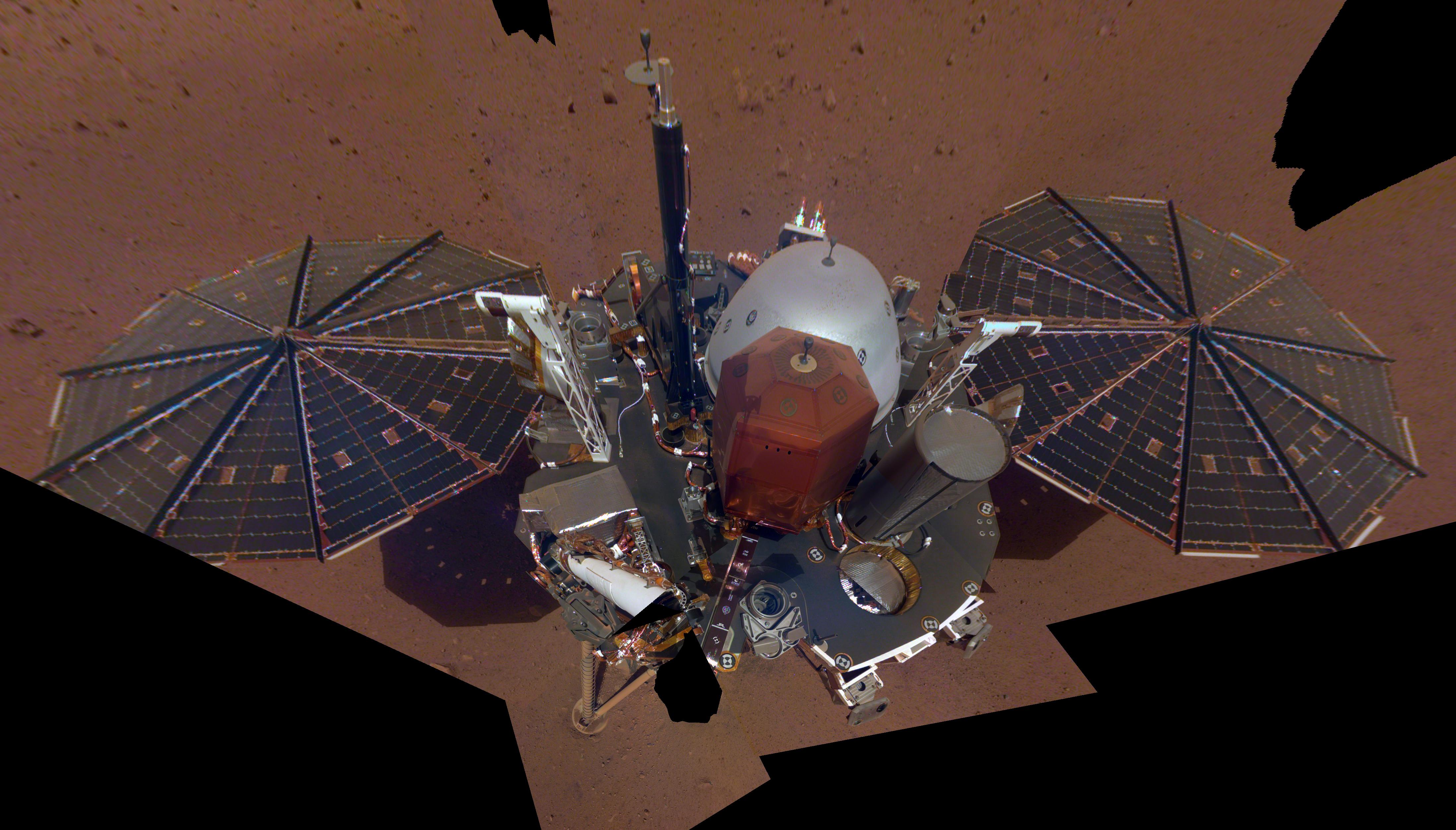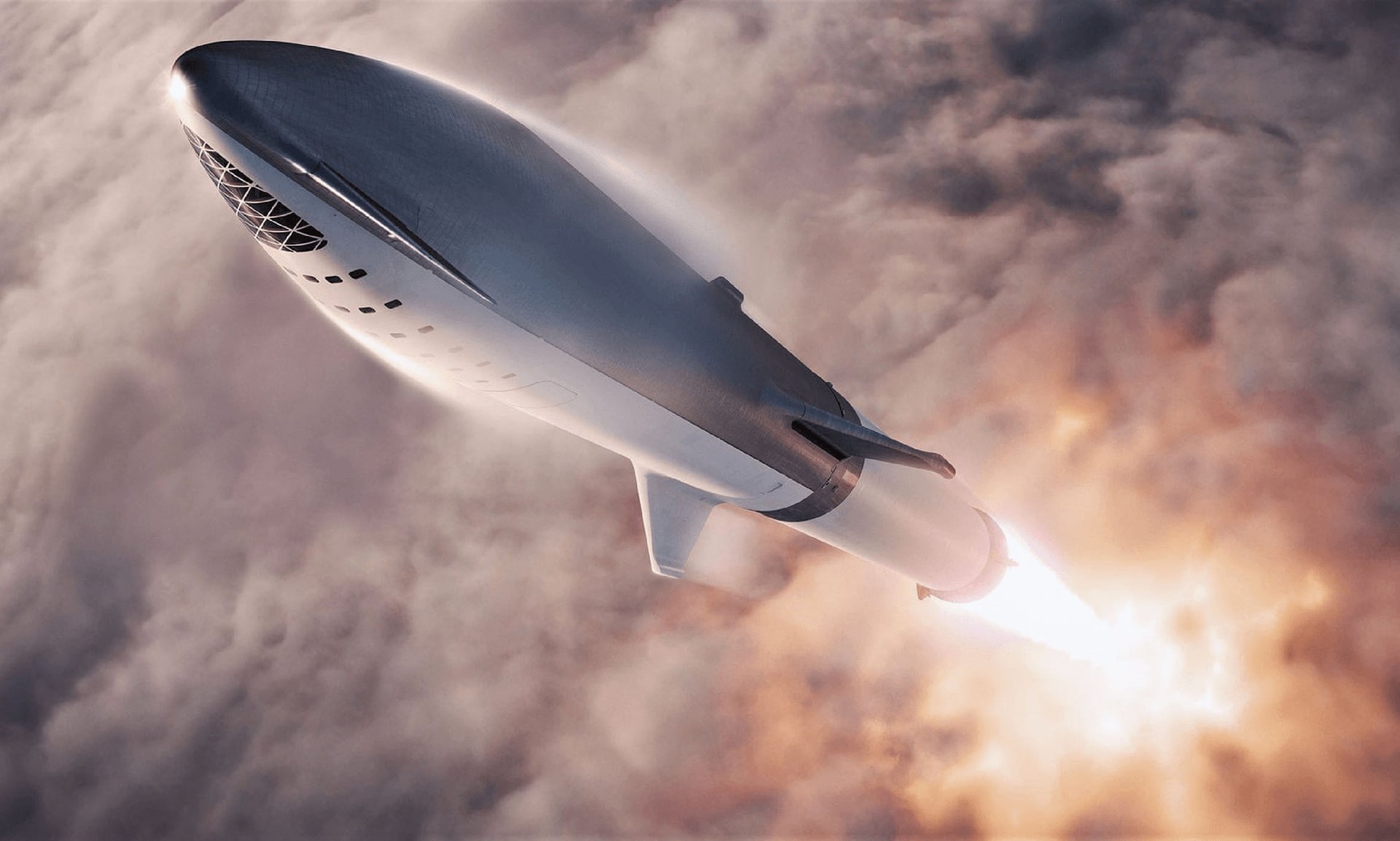
NASA’s InSight lander is busy deploying its Heat Flow and Physical Properties Package (HP3) into the Martian soil and has encountered some resistance. The German Aerospace Center (DLR), who designed and built the HP3 as part of the InSight mission, has announced that the instrument has hit not one, but two rocks in the sub-surface. For now the HP3 is in a resting phase, and it’s not clear what will happen next.
The HP3 is designed to measure the heat coming from Mars’ interior and to tell us something about the source of that heat. The basic idea is to determine how Mars formed, and if it formed the same way Earth did. It’ll also tell us something about how rocky planets in general form and evolve. But to do that, it has to get underground.
The HP3 uses a hammer system to pound itself into the ground. It works in phases, spending about four hours at a time hammering into the surface. But all that hammering creates a lot of friction and heat, so the HP3 rests for a couple days while things cool down. Then it measures the heat before continuing the cycle.









